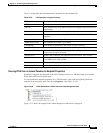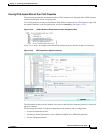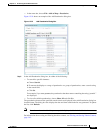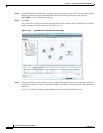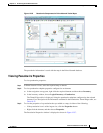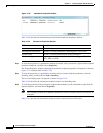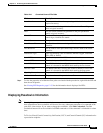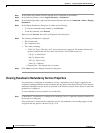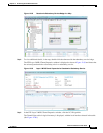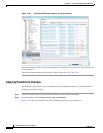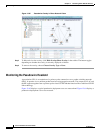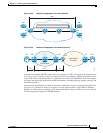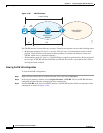
12-95
Cisco Prime Network 4.0 User Guide
OL-29343-01
Chapter 12 Monitoring Carrier Ethernet Services
Working with Pseudowires
Step 7 To view the properties of an Ethernet flow point associated with the pseudowire, right-click the EFP and
then choose Properties.
See Viewing EFP Properties, page 12-33 for the information that is displayed for EFPs.
Displaying Pseudowire Information
Note You might be prompted to enter your device access credentials while exectuing the command. Once you
have entered them, these credentials will be used for every subsequent execution of a command in the
same GUI client session. If you want to change the credentials, click Edit Credentials. The Edit
Credentials button will not be available for SNMP commands or if the command is scheduled for a later
time.
To To view Virtual Circuit Connectivity Verification (VCCV) and Control Channel (CC) information for
a pseudowire endpoint:
Table 12-41 Contained Current CTPs Table
Field Description
Local Interface The name of the subinterface or port, hyperlinked to the interface in
physical inventory.
ID The tunnel identifier, hyperlinked to Pseudowires Tunnel Edges
table in logical inventory.
Peer The peer tunnel identifier, hyperlinked to the peer pseudowire
tunnel in logical inventory.
Tunnel ID The identifier that, along with the router IP addresses of the two
tunnel edges, identifies the tunnel.
Tunnel Status The operational state of the tunnel: Up or Down.
Local Router IP The IP address of this tunnel edge, which is used as the router
identifier.
Peer Router IP The IP address of the peer tunnel edge, which is used as the router
identifier.
Pseudowire Type Type of pseudowire, such as Ethernet, Ethernet Tagged, CESoPSN
Basic, PPP, or SAToP.
Local MTU The size, in bytes, of the MTU on the local interface.
Remote MTU The size, in bytes, of the MTU on the remote interface.
Local VC Label The MPLS label that is used by this router to identify or access the
tunnel. It is inserted in the MPLS label stack by the local router.
Peer VC Label The MPLS label that is used by this router to identify or access the
tunnel. It is inserted in the MPLS label stack by the peer router.
Signaling Protocol The protocol used to build the tunnel, such as LDP or TDP.
Preferred Path Tunnel The path to be used for pseudowire traffic.



